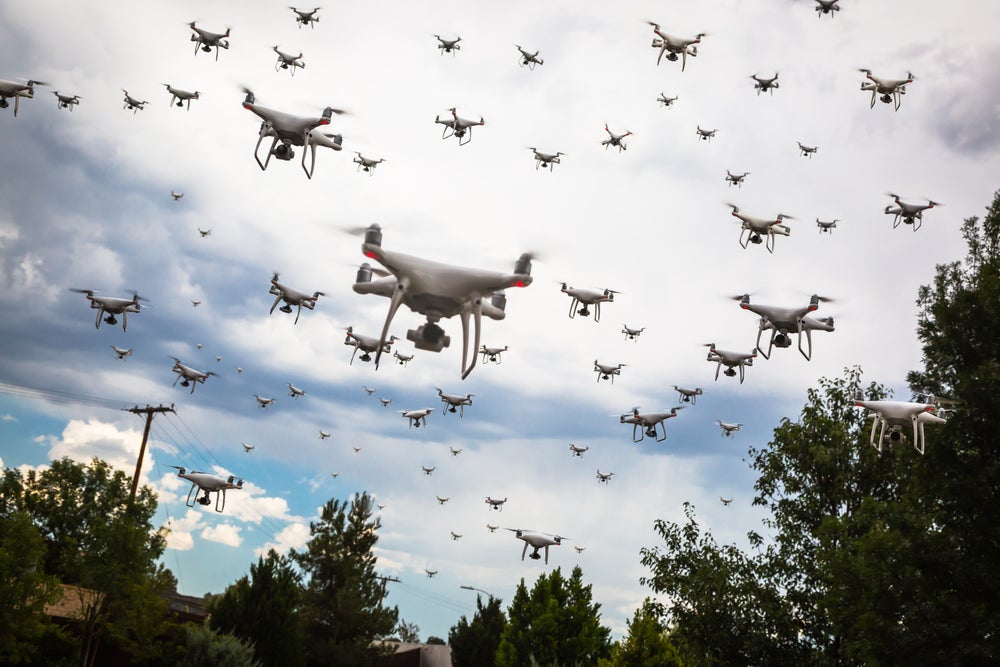
Drones are appearing more often on the skyline and the unmanned aerial vehicles are proving to be a greater threat as the technology improves and the commercial market for them grows.
Anti-drone technology, rather not new drone laws, have been called on to provide a solution to situations like the disruptions at UK airports Gatwick and Heathrow and the fatal attack in Yemen.
Professor of international relations at the University of Illinois and author of ‘Drones and Terrorism’, Nicholas Grossman, told Verdict that police powers in the UK “could have some meaningful impact”, but said a good anti-drone system should be the priority.
Robert Garbett, founder and chief executive of Drone Major Group, a global drone and counter drone consultancy, said:
“There remains very low awareness among the business community of the extraordinary pace at which drone technology is evolving, and this makes staying ahead of the threat posed by those who would abuse this technology challenging, for even the most competent of businesses and management teams.”
Detect, track, identify and defeat drone threats
Garbett explained that the British Armed Forces are world leaders in the use of drone technology for offence and defence.
How well do you really know your competitors?
Access the most comprehensive Company Profiles on the market, powered by GlobalData. Save hours of research. Gain competitive edge.

Thank you!
Your download email will arrive shortly
Not ready to buy yet? Download a free sample
We are confident about the unique quality of our Company Profiles. However, we want you to make the most beneficial decision for your business, so we offer a free sample that you can download by submitting the below form
By GlobalDataIts techniques are now being applied in counter drone strategies using advanced technologies to detect, track, identify and defeat threats posed by people abusing air drone technology.
Gatwick and Heathrow airports have not disclosed the type of anti-drone technology they intend to implement, but some systems on the market include high-resolution radar for detection, with lasers, ballistics, nets and jammers some of the possible ways to bring down illegal drones.
Garbett said: “There are literally hundreds of counter drone products and manufacturers worldwide and the market is expanding on a daily basis making it extremely difficult to keep track,”
According to Garbett, this is “one reason why the rapid, often knee-jerk adoption of such technology in the face of media pressure, while sometimes providing a short-term fix, can often be a long term error of judgement and, in isolation of appropriate policies and procedures, is rarely effective.”
He urges all organisations reacting to drone attacks and disruptions “to take a breath and think strategically” and to future-proof the solutions put in place.
The commercial air drone market is burgeoning and is “like the Wild West – exciting, and representing an unprecedented economic opportunity”.
But Garbett said: “There will always be those who would flaunt laws and regulation to cause maximum disruption around the world.
“This particularly impacts on more vulnerable sectors such as airports, financial centres, energy facilities, stadiums and concert venues, and so on, which require tailored defence strategies to protect against what is a new and real security challenge.”






